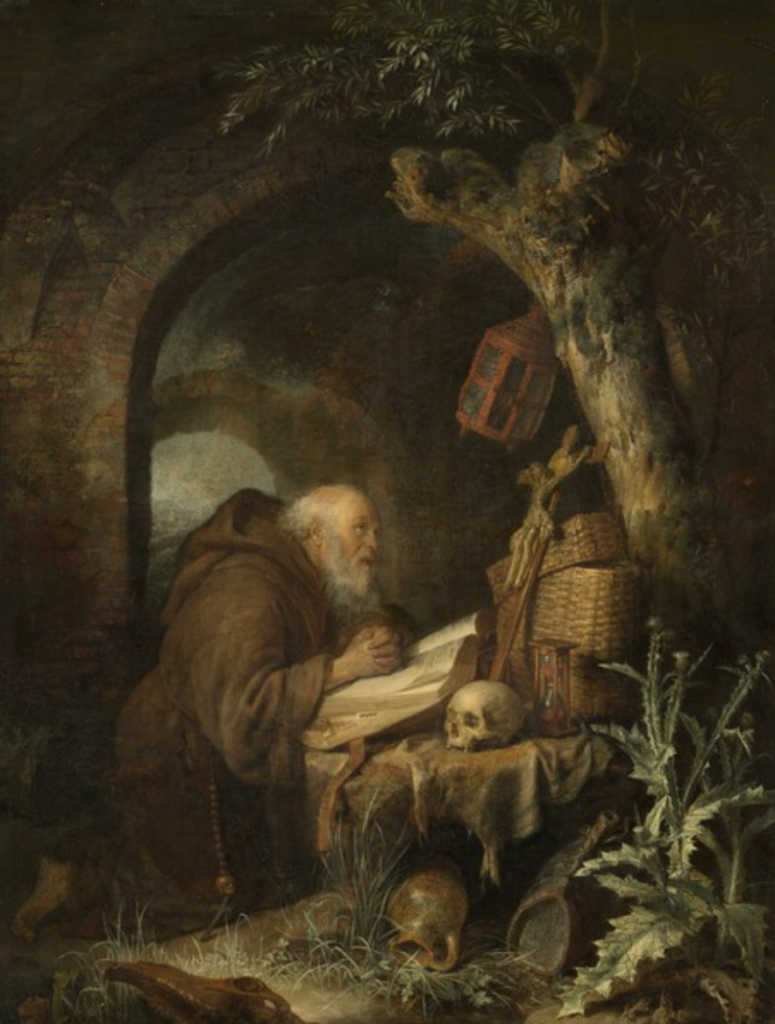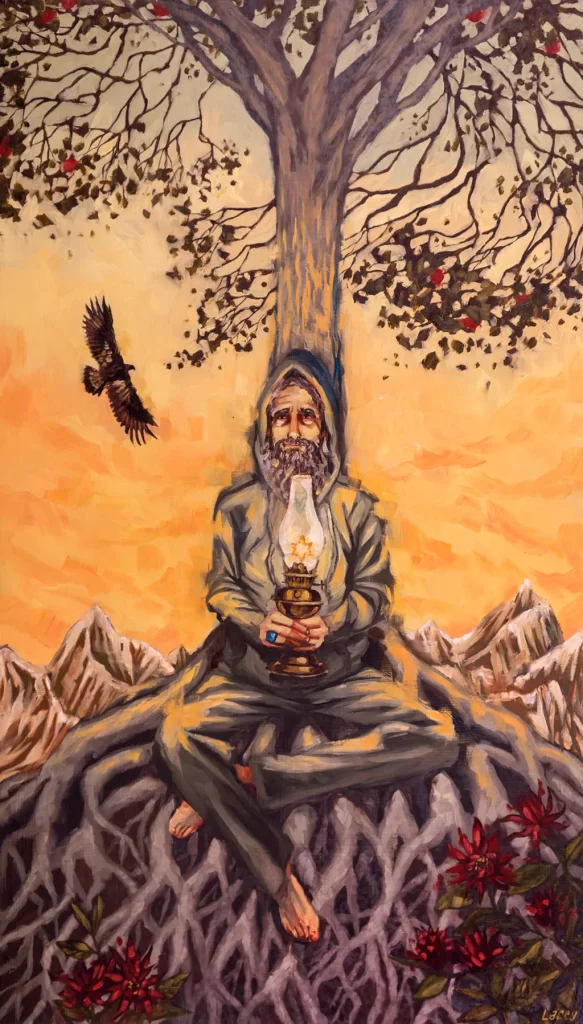Hermits – a place in the modern society
In nearly all cultures of the world, we find people with fascinating life stories, who chose to live differently, in distinctive communities or solitaire. These stories embody a rich legacy from men and women from ancient to modern times that sought to ease their existence by reporting themselves to moral values and proving that humans are more than just physical matter. Call them outcasts, holy people, or fashionable persons but one thing is clear, hermit stories are meant to inspire and depict an alternative vision of human life, full of meaningful content.
GET MORE FROM LEVEL

Since the beginning of time society has had structures based on hierarchy and the accumulation of power and wealth. Corruption and injustice affected too many of its members and some refused to take part in this scenography. Their choice? – Living in seclusion. Hermits were the first ones to approach such an extreme lifestyle but the idea of living off-grid with little means started to come back to life a few decades ago. They chose to live peacefully with the planet, in isolated areas, inside a small community, or just alone somewhere on the top of a mountain. They found meaning in this choice, a better existence, and a happier life. Some become hermits for religious reasons, others choose to make a statement against society. Regardless of the reasons, religious or secular, hermits looked for a way out of society and its misery.
It seems that their stories are relevant today more than ever. Contemporary society suffers from overconsumption, pollution, and waste, losing its personal connection with nature. In the remote past, people had transmitted stories about other people that have been famous through their lifestyle. Not glossy but eremitic and independent, governed by personal spiritual values. Examples of successful communities that live a parallel life were the monastic orders of Christianity and, more recently, communities such as the Amish in the U.S.A. Of course, this model raises many ethical questions. If one recognizes the erroneous within the society, is it just to retreat or should he try to make it right? Is complicity synonymous with the perpetuation of injustice or is there a way to make it up somehow? The truth is that this has more than one answer and in fact, the answer is strongly connected to the social, political, cultural, and economic context.

Hermits’ lifestyle
The word hermit comes from the Greek ”eremos” and it refers to a desolate place without people, thus, the state of solitude. In ancient times, hermits were religious individuals who sought temporary or permanent solitude in wild places. Hermits existed in all major civilizations and their place for worship or meditation is known as sites for revelation.
Early Christians were the first ones to choose an ascetic life over comfort and social abundance. Most of them sell their properties and give away their fortune to the poor and depart into the wilderness. The less one possessed, the easier to cut the ties with the material world and free themselves into enlightenment. Christians fled into the desert to look for places free of persecution, and social norms and to live independently. The main purpose of this lifestyle was prayer and spiritual elevation. Some hermits not only lived in isolation but also fasted, eating less and only what they could find or grow around them. Hermits became models of holiness for other Christians and isolation was seen as joy. If gathered in a small community, all members would share the same values and find happiness in being together as brothers and sisters.
Although these examples may seem far away from us, the idea of departing to search for something inside ourselves is very contemporary. Self-isolation as a way of life, first-generation farmers and eco followers retreat in remote places and build personal paradises. They follow simple rules, they feed with what they breed, cook, and limit contact with people, society, and its noise. Social channels also present many stories of people who travel the globe in search of authenticity and meaning. They live with little, do not search for comfort, and base their existence upon experiencing, not accumulating. Nevertheless, most of them admit that they cannot avoid the system forever and see this period as a time of transition towards a more fulfilling purpose and finding a true passion, a job, or a place to fit in.

Famous hermits of the world
Widely known as the ”first hermit”, St Paul of Thebes (226-341 BC) left the city of his birth not driven by the desire for solitude but rather to escape the vengeance of his brother and the Christian persecution. He became a poustnik, lived in a cave, and dined on bread delivered by a raven. However, due to his reasons to join this life, the vision of hermits’ spiritual motifs has been sometimes questioned.
Simeon Stylites is an authentic example of an eremit who lived during the Byzantine Age, near Aleppo, Syria. He lived for 37 years on a small platform on top of a pillar, later inspiring other stylites to follow his example. After reading the Beatitudes, at the age of 13, he devoted himself to God. Simeon practiced extreme austerity: he shut himself in a hut for 1,5 years fasting the entire period, he lived in a small cave situated on Simeon Mount, and lastly, he constructed a platform on a pillar and lived there for the rest of his life. Simeon had become very famous and people sought his counsel, considering his survival in the hut a miracle.
Anthony the Great (251 – 356 A.D., also known as the Father of all Monks, went into the wilderness (about AD 270), a decision which only strengthened his renown. The most famous episode of his life as a hermit is the sojourn in the Egyptian desert, where he was tempted by the devil. This scene inspired many ulterior depictions in visual art and literature.
Not all hermits freely choose an ascetic life. Robinson Crusoe did not choose solitude but definitely is one of the most popular figures of more recent hermits. He was forced to experience being alone and eventually found his faith while isolated on the island.
In the modern world, there are several examples of people withdrawing from social life and experiencing a solitary lifestyle for a variety of reasons.
The Japanese Hikikomori are well known for their self-imposed confinement, a state of isolation mostly in their rooms. As a result of the pressure of the outside world, they chose not to participate in society. They begin at first by appearing unhappy, gradually losing their friends, and becoming insecure and shy. Eventually, these modern-day hermits retreat in the isolation of their bedrooms.
A well-known hermit of modern times is the journalist Brendon Grimshaw, who owned an island in the Indian Ocean between 1962 and 2012. He moved from the UK to the island and lived isolated until his death. Grimshaw reforested the island, built 4.8 kilometers of nature paths, and succeeded to make Moyenne Island a national park.

The relevance of being a hermit today
We learn from our ancestors’ wisdom that they found relevance in their choices and some of them even achieved a state of holiness that determined the Christian church to canonize them later. But nowadays, religion is not at the center of our existence anymore and our general lifestyle is more complex than ever, extremely demanding, and stressful. As the population of Hikikomori show, the pressure of such a life determined young people to limit their contact with other humans and society in general. It is not a disease but perhaps a reaction to the aggressive way of life. Of course, technology makes things much easier and actually brings the world to us, thus, we do not need so much to leave the nest.
Following the hippies‘ example, people started to travel the planet in search of pristine places and authentic life experiences. Today the nomadic lifestyle is more popular than ever, people from all corners of the Earth pack a few essential things and walk or drive a van in search of liberty, tranquility, and meaningful social interaction. It seems we are not looking anymore to be in the middle of a crowd but look for a bunch of people with whom we share interests, ideas, and similar values. New generations are also more preoccupied with the planet’s health, ecology and how pollution and stress are affecting our life quality. In a way, choosing to live today like a hermit in remote areas of Alaska (for instance) shows a burning desire of discovering a truth. This similarity with ancient hermits confirms that out there there must be a truth that will give meaning to our lives on Earth and enables us to move forward. This truth is personal and unique to each of us and, ultimately, we decide which path is best to follow to become better people, happier and fulfilled individuals.

Leave a Reply